Texas is a Lone Star State and has long been a magnet for people seeking new opportunities and a better quality of life. With its vast landscapes, diverse cities, and strong economy, it offers many cheapest places to live. But let’s face it – moving to a new place isn’t just about chasing dreams; it’s also about making sure your wallet can keep up with your ambitions.
That’s where affordability comes into play. In a world where the cost of living seems to be skyrocketing everywhere, finding a place that won’t drain your bank account is more important than ever. Texas, known for its relatively low cost of living compared to many other states, still has some cities that stand out as particularly budget-friendly.
But how did we figure out which cities are the cheapest? We didn’t just throw darts at a map of Texas (though that might have been fun). Instead, we looked at several key factors:
We crunched the numbers, compared data from reliable sources like the U.S. Census Bureau and the Bureau of Labor Statistics, and came up with this list of the 10 cheapest cities to live in Texas for 2024. So, if you’re thinking about moving to Texas or just curious about where you can stretch your dollar the furthest in the Lone Star State, keep reading!
Top 10 cheapest places to live in Texas
1. McAllen

McAllen is nestled in the Rio Grande Valley and takes the top spot as one of the cheapest places to live in Texas. Known for its warm climate and proximity to Mexico, McAllen offers a unique blend of cultures and experiences. The cost of living here is about 24% lower than the national average, with housing costs being particularly low.
A typical home in McAllen costs around $160,000, while the average rent for a two-bedroom apartment hovers around $800 per month. But it’s not just about cheap housing – McAllen also boasts low costs for groceries, healthcare, and utilities. The city’s economy is driven by retail, healthcare, and international trade, providing diverse job opportunities for residents.
2. Brownsville
Coming in second is Brownsville, Texas’s southernmost city. Like McAllen, Brownsville benefits from its location on the Mexican border, offering a rich cultural tapestry and unique economic opportunities. The cost of living in Brownsville is about 25% lower than the national average.
Housing in Brownsville is a real bargain, with median home prices around $140,000 and average rent for a two-bedroom apartment at about $750. The city’s economy is diverse, with strong sectors in aerospace, healthcare, and tourism. Brownsville is also making strides in renewable energy, potentially opening up new job opportunities in the future.
3. Harlingen
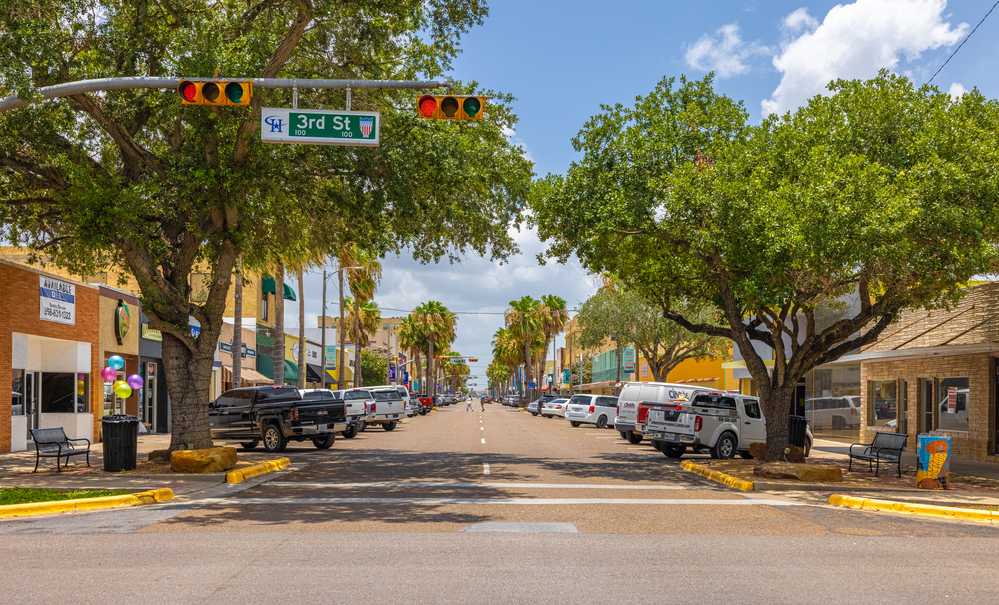
Rounding out our top three is Harlingen, another Rio Grande Valley gem. This city offers a small-town feel with big-city amenities, all at a price that won’t make your wallet weep. The overall cost of living in Harlingen is about 26% below the national average.
You can find homes in Harlingen for a median price of around $130,000, while renters can expect to pay about $700 for a two-bedroom apartment. The city’s economy is supported by agriculture, healthcare, and retail, with a growing emphasis on ecotourism due to its proximity to the Gulf Coast.
4. Amarillo

Moving away from the border region, we find Amarillo in the Texas Panhandle. Known for its wide-open spaces and famous steaks, Amarillo offers a different flavor of Texas living. The cost of living here is about 15% lower than the national average, which makes it one of the best places to live in the USA.
Housing in Amarillo is affordable, with median home prices around $180,000 and average rent for a two-bedroom apartment at about $850. The city’s economy is diverse, with strong sectors in agriculture, energy, and healthcare. Amarillo is also home to a growing arts scene, adding cultural value to its economic benefits.
5. Lubbock
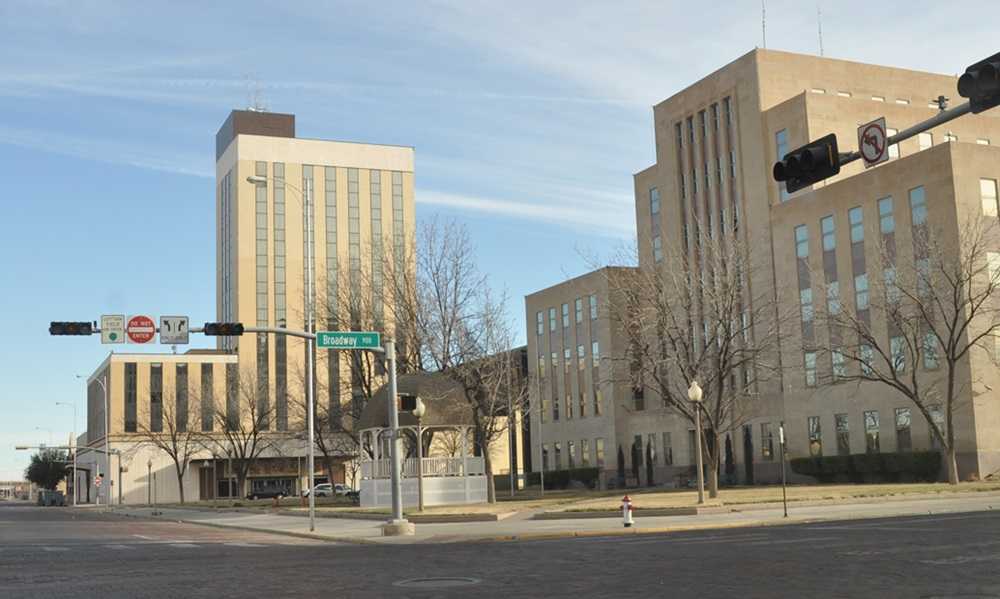
Home to Texas Tech University, Lubbock combines college-town energy with affordable living. The cost of living in Lubbock is about 16% more affordable than typical rates across the country, offering an appealing choice for both students and their families.
You can find homes in Lubbock for a median price of around $170,000, while renters can expect to pay about $800 for a two-bedroom apartment. The city’s economy is bolstered by education, healthcare, and agriculture, with a growing technology sector thanks to the university’s influence.
6. El Paso

El Paso, situated on the western edge of Texas, offers a unique blend of American and Mexican cultures. Despite being one of Texas’s larger cities, El Paso maintains a cost of living about 13% below the national average.
Housing in El Paso is reasonable, with median home prices around $190,000 and average rent for a two-bedroom apartment at about $900. The city’s economy is diverse, with strong sectors in healthcare, education, and international trade. El Paso’s position as a border city also provides unique economic opportunities.
7. Wichita Falls
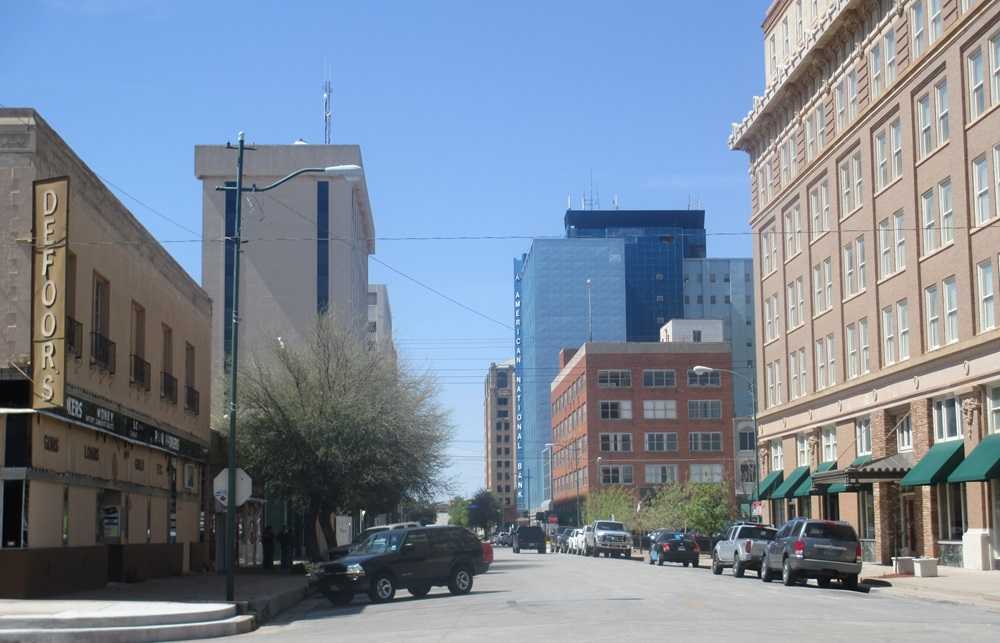
Located in North Texas, Wichita Falls offers small-city charm with a low cost of living, about 18% below the national average. The city is known for its friendly community, outdoor activities, and recreational opportunities.
Homes in Wichita Falls have a median price of around $140,000, while renters can find two-bedroom apartments for about $750 on average. The city’s economy is supported by Sheppard Air Force Base, healthcare, and manufacturing sectors.
8. Abilene
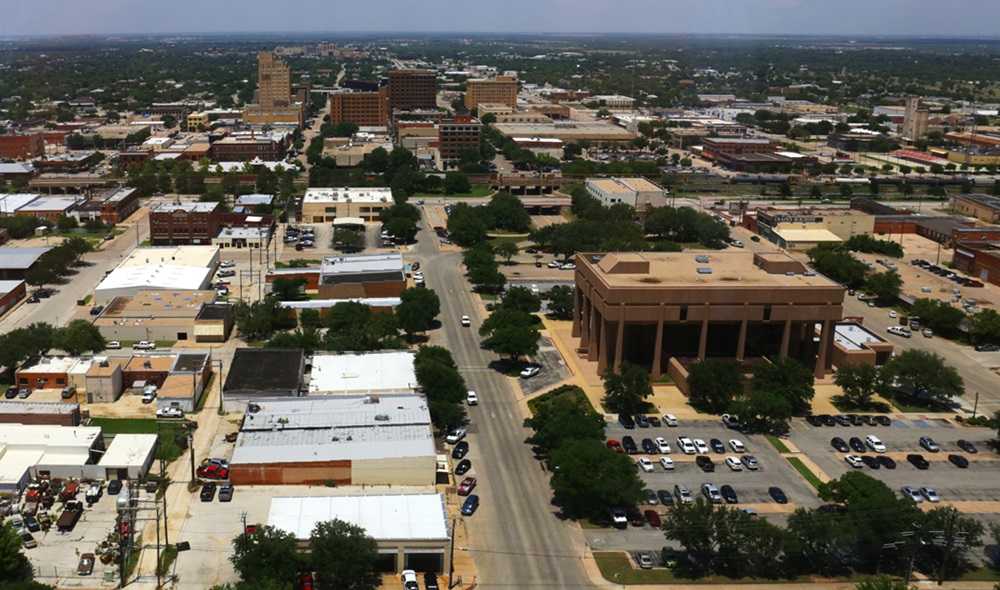
Abilene, nicknamed the “Key City,” offers a blend of West Texas hospitality and affordability. The cost of living here is about 15% cheaper than the national average, making it an attractive option for families and retirees.
Housing in Abilene is budget-friendly, with median home prices around $160,000 and average rent for a two-bedroom apartment at about $800. The city’s economy is diverse, with strong sectors in education, healthcare, and energy.
9. Beaumont
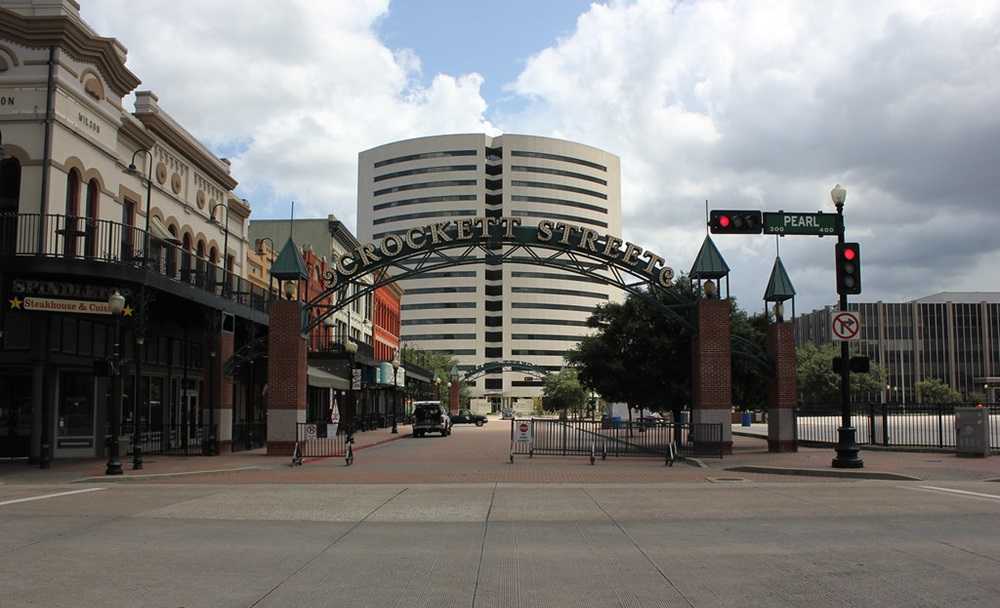
Beaumont, located in Southeast Texas, offers affordable living with easy access to the Gulf Coast. The cost of living in Beaumont is about 14% lower than in most places. That is why it is one of the cheapest places you can call home in the U.S.
You can find homes in Beaumont for a median price of around $150,000, while renters can expect to pay about $850 for a two-bedroom apartment. The city’s economy is driven by the petrochemical industry, healthcare, and education sectors.
10. Corpus Christi
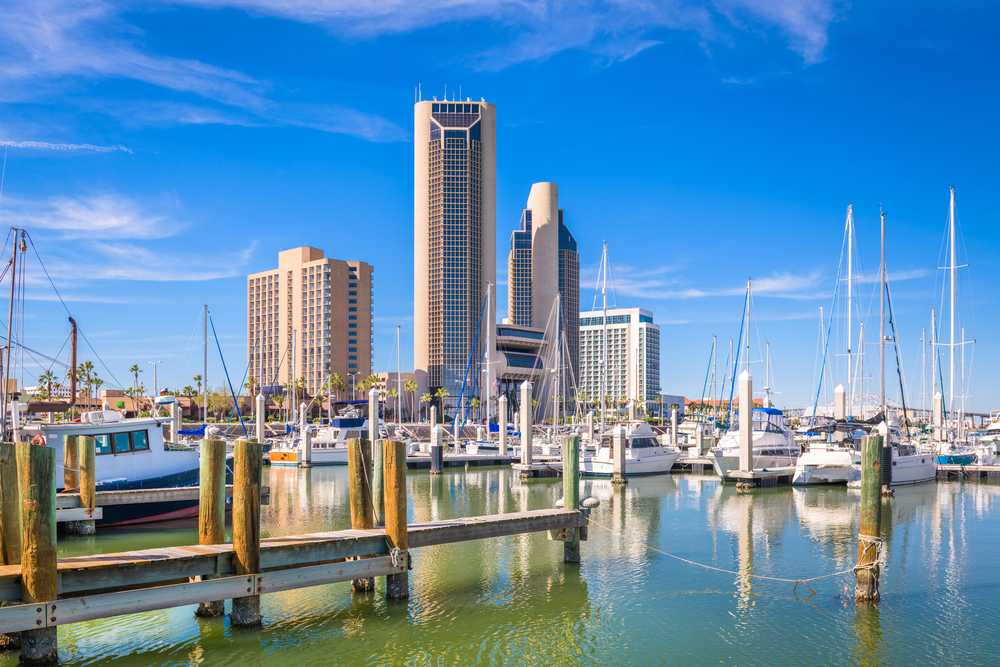
Rounding out our top 10 is Corpus Christi, offering affordable coastal living. The cost of living here is about 10% lower than the national average, which is impressive for a city with beach access.
Housing in Corpus Christi has a median price of around $200,000, while the average rent for a two-bedroom apartment is about $950. The city’s economy is supported by tourism, healthcare, and the Port of Corpus Christi, one of the largest ports in the United States.
Factors Contributing to Low Cost of Living
Understanding why these cities are so affordable can help you make an informed decision about where to live. Let’s break down the main factors that contribute to the low cost of living in these Texas cities.
A. Housing costs
Housing is often the biggest expense in anyone’s budget, and it’s where these Texas cities really shine. In most of these cities, you can buy a home for less than $200,000 or rent a two-bedroom apartment for under $1,000 a month. This is significantly lower than the national average.
Several factors contribute to these low housing costs:
B. Utilities
Utility costs in these cities are generally lower than the national average. This includes electricity, water, gas, and internet services. For example, the average monthly electricity bill in Texas is about $100, compared to the national average of $117. While slightly higher, when combined with lower costs in other areas, it still contributes to an overall lower cost of living.
Factors influencing utility costs include:
C. Transportation
Transportation costs in these cities are generally lower than in larger urban areas. Most of these cities are car-dependent, but lower gas prices and shorter commute times help keep costs down. For example, the average gas price in Texas is often below the national average.
Factors affecting transportation costs include:
D. Food and groceries
Food costs in these cities are typically below the national average. This applies to both grocery stores and restaurants. For example, a gallon of milk in these cities might cost around $2.50, compared to $3.50 in more expensive cities.
Factors influencing food costs include:
E. Healthcare
Healthcare costs in these cities are generally lower than the national average. This includes both routine medical care and hospital services. For example, a doctor’s visit might cost $80-$100 in these cities, compared to $100-$150 in more expensive areas.
Factors affecting healthcare costs include:
By understanding these factors, you can see why these Texas cities offer such affordable living. Whether it’s the abundance of land leading to lower housing costs, or the proximity to agricultural areas resulting in cheaper groceries, these elements combine to create some of the most budget-friendly cities in the Lone Star State.
Pros and Cons of Living in These Cities
A. Advantages of affordable living
Living in one of Texas’s most affordable cities comes with several significant benefits:
- Financial freedom: Lower living costs mean you can save more of your income or have more disposable income for things you enjoy. This can lead to less financial stress and more opportunity to build wealth over time.
- Easier homeownership: With lower housing prices, the dream of owning a home becomes more attainable. This can provide long-term financial stability and the ability to build equity.
- Lower debt burden: Cheaper living expenses can mean less reliance on credit cards or loans to make ends meet, potentially leading to a healthier financial situation.
- More disposable income for experiences: When basic needs cost less, you have more money for travel, hobbies, or other life-enriching experiences.
- Potential for earlier retirement: Lower costs could mean you’re able to save more for retirement, potentially allowing you to retire earlier or more comfortably.
- Less economic pressure: In times of financial hardship, living in a low-cost area can provide a buffer, making it easier to weather economic storms.
- Opportunity for entrepreneurship: Lower overhead costs can make it easier to start and run a small business.
B. Potential drawbacks to consider
However, it’s important to consider potential downsides as well:
- Fewer job opportunities: Some of these cities may have less diverse job markets compared to larger metropolitan areas.
- Limited public transportation: Many of these cities are car-dependent, which can be a drawback if you prefer or need public transit options.
- Fewer cultural amenities: While these cities do have cultural offerings, they may not match the variety found in larger cities.
- Less diverse populations: Some of these cities may offer less diversity in terms of demographics, cuisines, or cultural events.
- Extreme weather: Many of these cities experience very hot summers, and some are prone to natural disasters like hurricanes or tornadoes.
- Lower salaries: While the cost of living is lower, salaries in these areas may also be lower than in larger cities or more expensive states.
- Limited educational options: While all these cities have educational institutions, they may not offer the same variety of specialized programs as larger cities.
It’s crucial to weigh these pros and cons based on your personal priorities and lifestyle preferences. What might be a drawback for one person could be an advantage for another. For example, a smaller city might offer a closer-knit community feel that some people prefer over the anonymity of a large metropolis.
Remember, the “best” place to live is highly subjective and depends on individual circumstances, goals, and preferences. These affordable Texas cities offer a chance to live well on less, but it’s important to consider all aspects of life there before making a move.
V. Job Market and Economic Opportunities
Understanding the job market and economic landscape is crucial when considering a move to one of these affordable Texas cities. While they offer lower living costs, it’s equally important to ensure you can find suitable employment or business opportunities. Let’s explore the major industries and employment situation in these cities.
A. Major industries in these cities
- Healthcare: This is a significant sector in almost all of these cities. Hospitals, clinics, and healthcare services provide numerous jobs, from medical professionals to administrative staff.
- Education: With numerous schools and some hosting universities (like Texas Tech in Lubbock), education is a major employer in many of these cities.
- Retail: The retail sector is strong in these cities, particularly in McAllen and Brownsville, which benefit from cross-border shopping.
- Agriculture and Food Processing: Cities like Amarillo, Lubbock, and Corpus Christi have strong ties to agriculture and related industries.
- Energy: Oil, gas, and increasingly, renewable energy sectors provide jobs in cities like Midland, Odessa, and Corpus Christi.
- Manufacturing: Cities like Wichita Falls and Abilene have significant manufacturing sectors.
- Military and Defense: Some cities, like Wichita Falls with Sheppard Air Force Base, have a strong military presence contributing to the local economy.
- Tourism: Coastal cities like Corpus Christi benefit from tourism, as do border cities with their unique cultural attractions.
- Technology: While not as prominent as in larger tech hubs, cities like Lubbock are seeing growth in tech sectors, often tied to university research and development.
B. Employment rates and average salaries
As of 2024, Texas overall has been experiencing robust job growth, outpacing the national average. However, it’s important to note that employment rates and salaries can vary significantly among these affordable cities.
- Employment rates: Most of these cities have unemployment rates close to or below the national average. For example, Amarillo and Lubbock often boast unemployment rates lower than both the Texas and national averages.
- Average salaries: While salaries in these cities are generally lower than in major metropolitan areas like Dallas or Houston, they often provide a good standard of living when coupled with the lower cost of living. Here’s a general idea of average salaries in some key sectors:
- Healthcare: Registered Nurses might earn around $65,000 – $75,000 annually.
- Education: Teachers might earn between $45,000 – $55,000 per year.
- Retail: Retail managers might make around $40,000 – $50,000 annually.
- Manufacturing: Skilled manufacturing workers might earn $35,000 – $45,000 per year.
It’s crucial to remember that these are averages and actual salaries can vary based on experience, specific employer, and other factors. Additionally, while these salaries might seem lower compared to bigger cities, the lower cost of living often means your money goes further.
When considering a move to one of these cities, it’s wise to research the specific job market for your industry. Look at job postings, reach out to local professional organizations, and consider the long-term career growth potential in your field.
Also, keep in mind that many of these cities are actively working to diversify their economies and attract new industries. This could mean growing opportunities in sectors like technology, renewable energy, and advanced manufacturing in the coming years.
Lastly, don’t overlook entrepreneurial opportunities. The lower cost of living and doing business in these cities can
Conclusion: Cheapest places to live in Texas
Texas offers a unique blend of affordability and opportunity, particularly in the 10 cities we’ve explored. From the border town charm of McAllen to the coastal allure of Corpus Christi, these cities prove that you don’t have to break the bank to enjoy a high quality of life in the Lone Star State. While each city has its own character and challenges, they all share the common thread of offering a cost of living well below the national average.
As you consider your options, remember that affordability is just one piece of the puzzle. Job opportunities, cultural fit, and personal preferences should all factor into your decision.
The key is to do your research, visit if possible, and imagine yourself not just living, but thriving in these communities. With careful consideration, you might find your perfect Texan home among these budget-friendly cities.
FAQs: Most affordable places in Texas to live
Which city in Texas has the lowest cost of living?
McAllen is often cited as one of the Texas cities with the lowest cost of living due to its affordable housing and low cost of goods and services.
What is the least expensive county in Texas?
Duval County is considered one of the least expensive counties in Texas due to its low property values and affordable cost of living.
Is Texas an affordable state to live in?
Yes, Texas is generally considered an affordable state to live in, with lower-than-average housing costs and no state income tax.
Is Texas cheap for housing?
Yes, Texas has relatively cheap housing compared to many other states, particularly in its smaller cities and rural areas.
Why is living so cheap in Texas?
Living in Texas is cheap due to the state’s low taxes, affordable housing, and lower overall cost of living compared to the national average.
What is the safest place to live in Texas?
Fulshear is currently considered the safest place to live in Texas, with extremely low crime rates and a strong community focus on safety.




